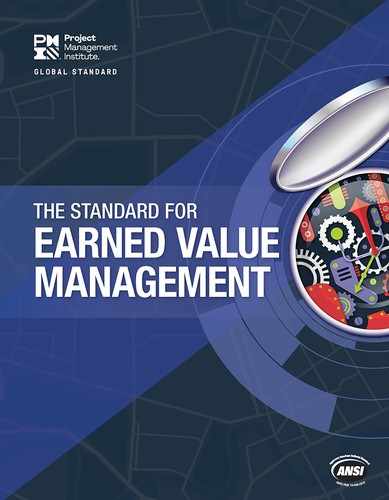9
Within the practice of project management, developments include the expansion of EVM to include the concept of
earned schedule (ES). ES is an extension to the theory and practice of EVM. ES adds to the schedule management.
ES concepts and practices are described in Sections 3 and 4 of this standard.
1.4 BASIC EVM CONCEPTS
Effective planning requires a firm understanding of assumptions, requirements, constraints, scope, and deliverables.
In an agile or in a hybrid environment, these may include burn charts and velocity calculations. Planning also includes
the development of the various project management plans and is where the initial identification as to how and when
EVM will be done for a specific project takes place. During the planning process, the means for assessing physical
work progress and assigning EV has to be documented.
During the planning process, the emphasis is placed on gaining agreement among the principal stakeholders
regarding the project objectives. Using a WBS, at this point, the scope of the project needs to be elaborated into
executable and manageable parts known as work packages (WP). Aligning the WPs defined in the WBS into project
cost and scheduling subsystems is a project management practice. The WPs may be organized in control accounts
(CAs) based on the project organizational breakdown structure (OBS) and responsibility assignment matrix (RAM).
A CA is a management control point where scope, budget, and schedule are integrated and compared to the EV for
performance measurement.
Project work needs to be scheduled up to the completion of the project, including the identification of critical
milestones. The project schedule shows the timing of key accomplishments and interfaces. It also provides evidence
that the project management plan supports the stakeholder agreement regarding project objectives. Scheduling
cannot be executed without knowledge of resource availability and constraints. This is an iterative process until a
balance is struck that meets project scheduling objectives within the identified resource limitations.
Once the work is logically scheduled and resources identified, the work scope, schedule, and cost are integrated
and recorded in a time-phased budget known as the PMB. This is the time-phased budget plan that is used to
measure project performance. In addition to routine project management planning, EVM methods are selected and
applied for each CA or WP based on scope, schedule, and cost considerations.
During project execution, EVM requires the recording of resource utilization (labor, materials, etc.) and risk response
cost for the work performed within each of the work elements in the project management plan. In other words, actual
costs need to be captured in a way (both per the WBS and the calendar) that permits comparison with the PMB.
Actual costs are collected at the CA level or below. The whole process is explained in detail in Sections 3 and 4 of this
standard.
..................Content has been hidden....................
You can't read the all page of ebook, please click here login for view all page.
